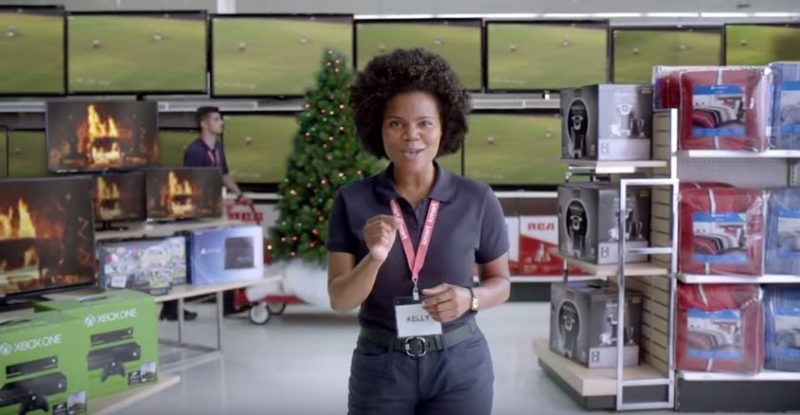October’s The New December For Mobile Marketers
As more shoppers complete their holiday shopping by October, columnist Anthony Bursi says it's critical for mobile marketers to get their holiday strategy in place.

Nope. Don’t say it. If it starts with a “Merry” or “Happy,” it’s way too early. It seems the holiday season comes sooner and sooner every year. According to a 2012 study, 78 percent of Americans don’t want to hear Christmas music before Thanksgiving, and 75 percent are adamant about keeping decorations stored until after Thanksgiving.
So why do brands persist in “holidayizing” as soon as Halloween? Well, because it works.
Oracle Marketing Cloud (my employer) and Edison Research produced a study that found the majority of people surveyed had completed the bulk of their holiday shopping by October. What’s more, their spending in October outpaced those in December by nearly $900.

By sifting through the data and borrowing techniques from past Q4s, brands can arm themselves with a holiday mobile strategy that meets their sales quotas, while maintaining customer engagement.
What Are The Fa-La-La Facts?
With many shoppers completing their purchases prior to December, it’s important to recognize the how, where and what of holiday marketing strategies. The Digital Age led us to believe shopping at brick-and-mortar storefronts was a thing of the past. The data prove otherwise.
Starting in October, in-store and online purchases are dead even, yet by December, 60 percent of customers are shopping in a physical store, compared with 40 percent using online methods.
Marketers who use this information have the advantage. During the 2014 holiday season, 75 percent of holiday shoppers owned a smartphone, and 65 percent owned a tablet. Of those, 44 percent used a smartphone to make a holiday purchase.
Retailers like Best Buy understand the balance between in-store and online experiences. During the 2013 holiday season, Best Buy launched an ad campaign that encouraged users to come and test out items in-store and learn from experts. By connecting its online prices and marketing strategies with those found in-store, the electronics retailer contributed to a 20 percent decline in showrooming purchases.
Additionally, push notifications serve as an efficient method to connect the mobile customer to in-store experiences. During the holiday season last year, retailers sent twice as many push notifications on Black Friday and Cyber Monday.
What’s more, between November 22 and December 4, push notifications’ engagement rate nearly doubled when sent in the afternoons (noon to 5 p.m.) compared with the morning (6 a.m. to noon) and night (6 p.m. to midnight) messages.
Amazon Prime succinctly coordinates its messaging by keeping buyers in the loop, from online confirmation pages and emails to delivery updates via push notifications.
Making A List
No holiday story is complete without a visit from the ghosts of seasonal strategies past, especially when they help us make better marketing decisions. The following brands made an impact on 2014 holiday shoppers by incorporating early promotion, emotional connections and mobile tactics into their campaigns.
Kmart
Despite the audible groans early holiday promotions elicit, Kmart chose to confront the Scrooges with a tongue-in-cheek TV spot. Released in September, the ad intentionally targets the early shoppers while keeping the Christmas motifs to a minimum.
According to the Oracle Marketing Cloud (OMC) and Edison study, 65 percent of shoppers said they made a holiday purchase on a smartphone or tablet while watching TV during the 2014 holiday season. What made this commercial unique was its ability to highlight the benefits of using Kmart’s layaway program, which coincided with the shopping experience on its mobile app.

Kmart’s “Not a Christmas Commercial.”
Burberry
A good value is always attractive to consumers, but during the holiday season, it’s the emotional connection that drives people to shop. Take the Burberry Kiss campaign as an example.
As a 159-year-old brand, Burberry strove to connect its rich heritage to a millennial audience while invoking an emotional reaction that relates to all generations.
The company chose to bridge the gap between the physical and digital realms through a “kiss capturing” technology available on users’ mobile devices. Individuals could send a kiss along with a sweet message to a loved one.
The results were phenomenal; visitors from more than 215 countries spent an average of three and a half minutes interacting with the campaign. Moreover, Burberry aligned the campaign across all of its digital platforms and in-store displays, resulting in more interaction with their brand.
Stella Artois
Sometimes the best holiday campaign is one that seamlessly integrates into the day-to-day life of a consumer. During the 2014 holiday season, Stella Artois launched a series of Instagram ads meant to appeal to food-obsessed, high-quality-photography-loving millennials.
Using targeting data, the ads only showed up in the feeds of age-appropriate users and mimicked the themes and aspirations of other popular Instagram accounts. As the first beer brand to buy Instagram ads, Stella Artois smartly combined its brand with a native mobile platform perfectly suited to the task.

Conclusion
When it comes to developing a holiday strategy, marketers should rely on the facts with a dash of creativity. Despite what you hear, more and more folks are completing their holiday shopping by October, so be sure you’re prepared to appeal to the early buyers.
Likewise, it’s important to consider the purpose of your message, its emotional weight and the platform it’s delivered on. If there’s one takeaway from the 2014 holiday shopping season, it’s that a targeted mobile campaign with the right amount of emotion and data can produce significant results.
Contributing authors are invited to create content for MarTech and are chosen for their expertise and contribution to the search community. Our contributors work under the oversight of the editorial staff and contributions are checked for quality and relevance to our readers. MarTech is owned by Semrush. Contributor was not asked to make any direct or indirect mentions of Semrush. The opinions they express are their own.
Related stories